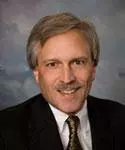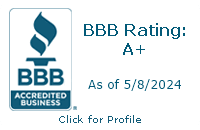Todd introduces his series with a high-level look at personal accountability.

In last month's e-newsletter, I wrote about the need for change, and also its difficulty. This month, "change" becomes a little more personal, as I describe changes I intend to make myself in 2006.
A few comments may help to set the overall context. The topics for this month and next month can be viewed as an internal case study that parallels experiences with our clients. Todd Herman Associates is well-known for helping companies improve their business through technology and process improvement – but, our work is most successful in companies having competent people who are flexible, teachable, and open to enhanced accountability. We can help clients change their processes to quickly expose potential problems, but people must still act on these issues. We can deploy technology help track results, but people must still practice accountability to achieve results. Likewise, I work to improve my business through technology and business processes – but it is sometimes a challenge for people to allow themselves to be linked by process with the technology. So, my main business resolution for 2006 is to improve my personal accountability in aligning my actions with our processes and technology, so that I can better lead by example.
Here's a question to ponder – "to whom are you accountable?" Let's define "accountability" as "willingness to explain your actions." Some would say that accountability depends on your position in an organization – but, that may or may not be true. Even when accountability depends on position, that may or may not be desirable. Two examples may clarify this.
- Let's say you occupy a staff position at the lowest rank of an organization – that makes you accountable to the person above you, right? In theory, yes. In practice, not always – if your supervisor never asks you to explain your actions, then you're not truly accountable to your supervisor. You might think that this situation is very freeing or liberating to the staff person – but, paradoxically, this frequently causes frustration for the staff person because the implied message from the supervisor is "I don't care enough about you to check and see how you're doing."
- Now let's say you occupy the position at the very top of the org chart – you're the president, or chief executive, or executive director, or similar position. Since you're at the top, that means you're not accountable to anyone, right? This depends on how your organization is structured. Many times, the top person reports to a board of directors or similar group – such a group can provide accountability. Many times, however, this group is not independent of the top person, and thus does not fulfill a true accountability function. What is the top leader missing due to this lack of accountability? Another party, to provide support and honest feedback, which helps the person reach their full potential.
It's interesting – people often aspire to the top position, because they believe that things will be great once they get there. But, to paraphrase leadership consultant and author John C. Maxwell, "people may want to be the leader when things go well, but do they want to accept responsibility when their plans go wrong?" I agree with Dr. Maxwell – being the leader is harder than it looks. And it's often hard for the leader to get straightforward, unadorned feedback, even from a trusted partner or long-time direct report – or, maybe I should say, it's especially hard to get this feedback from a trusted partner or long-time direct report. Why? Likely because this person and the leader have become comfortable with each other – after all, comfort is a natural by-product of trust and longevity.
How does the leader find someone to whom to be accountable? Here are some techniques:
- Business improvement organizations exist to form executives and managers into small groups of like-minded peers, helping them jointly work on issues facing them or their business. One such organization is TEC International (www.teconline.com) – my friend, Dick Wilson (direct: 336-830-3526), is the local chairperson of several Triad TEC groups. TEC groups bring together peer-level non-competing executives or managers for monthly group meetings to improve themselves and their businesses, hear expert speakers who challenge them to change and grow, experience monthly executive coaching with Dick, and connect with other TEC members.
- Some executives and managers have their own board of advisors they occasionally convene to help discuss issues. While these boards – which may include the accountant, attorney, insurance agent, banker, systems consultant, and similar persons serving the business – are typically informal and serve only to advise, not govern, my friend Wayne Ford of Innovative Financial Solutions LLC (direct: 336-398-1190) recommends that his business-owner clients make these formal and convene them 2 to 4 times per year.
- Working with a coach of some type – life coach, business coach, or executive coach – is another way to solicit feedback and foster accountability. Coaching sessions typically occur every 2 to 4 weeks, with phone or email support between meetings. The goal of a coach is to help people generate extraordinary results, by eliciting client-generated solutions and strategies, and holding the client accountable for meeting results.
- Having an accountability partner is a technique that is similar to a coach, but in a less formal arrangement. Such a partner can be a friend or co-worker, but this person must be chosen carefully – your accountability partner must be someone who will not enable bad habits and who is seriously committed to your personal development.
I have experienced some elements of all 4 techniques over the last 5 years, and recognize the relative merits of each. For someone ready to improve performance by practicing increased accountability, the question is intensely personal – "in which one (or more) of these settings will I feel most willing to be vulnerable, opening myself up to review, and answering questions that I find uncomfortable?" For me, working with an executive coach and having an accountability partner are the techniques that best fit my personality, schedule, and goals.
Psychologist, author, and speaker Henry Cloud spoke in August 2005 at the Willow Creek Association's "Leadership Summit 2005." His remarkable 35-minute presentation shared the struggles that he and others have faced in trying to make changes. Key points from his talk included:
- What begins as external becomes internal – that is, externally imposed techniques eventually become internal self-discipline.
- You must find an external structureto help you accomplish change – elements of structure include:
- Mark your calendar to block a regular weekly time that you never miss. Set your schedule and stick with it – always show up, unless you're ill or out of town.
- Introduce some consequences to help motivate change. The consequence that Dr. Cloud set for himself was that he would give his favorite pen – a Mont Blanc pen that was a gift from a friend – to his accountability partner if he failed to call him at the designated time every Monday morning. While this seems a trivial consequence, it was effective – for 2 years, Dr. Cloud always met his goals, even if that meant staying up late Sunday night to be ready for the Monday morning call.
- Learn the gift of process – change happens over time. Be like an ant – move one grain of sand at a time.
In pulling together concepts from Dr. Cloud and others, my coach and I have formed this key question, which applies equally to either personal or professional life:
What external structures can be put in place (or changed) to make focused intentions a reality?
In next month's e-newsletter, I'll discuss this question in detail, illustrating it with examples from my experience. Until then, consider an external structure that would help you reach your own potential! (Helpful hint: This newsletter can be printed for a visual reminder...)
Sincerely,
![]()
Todd L. Herman





